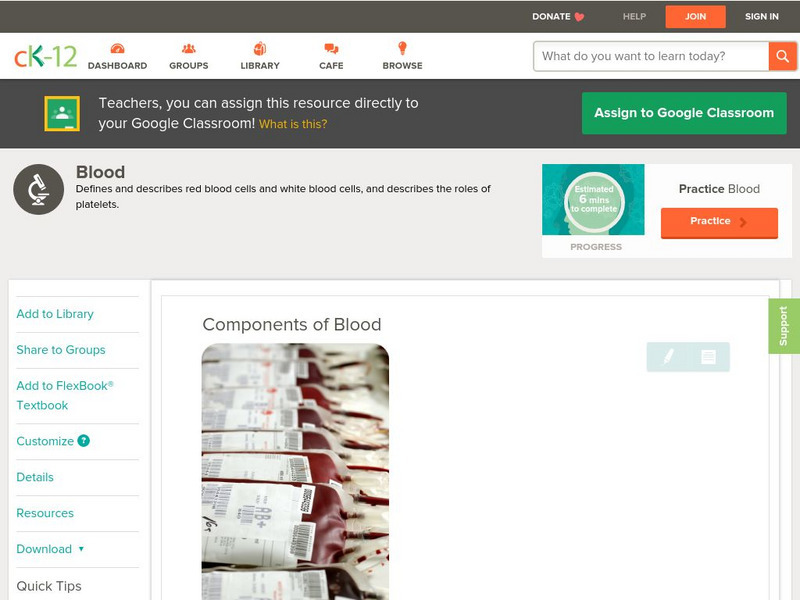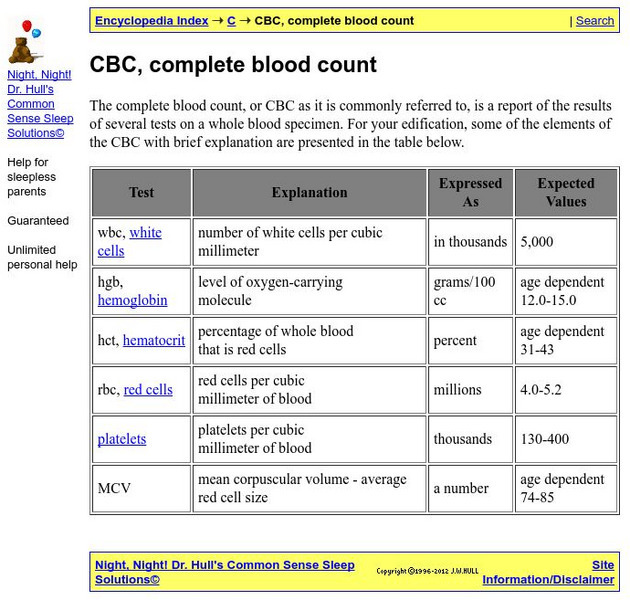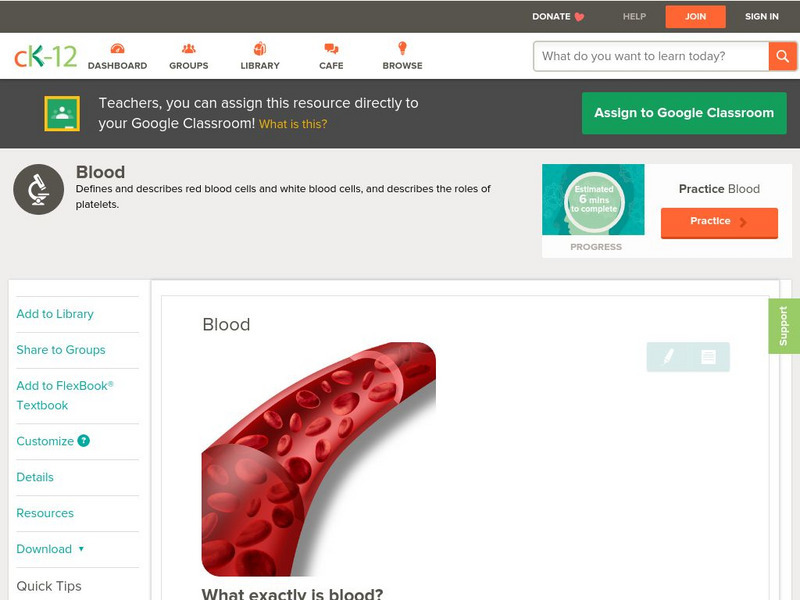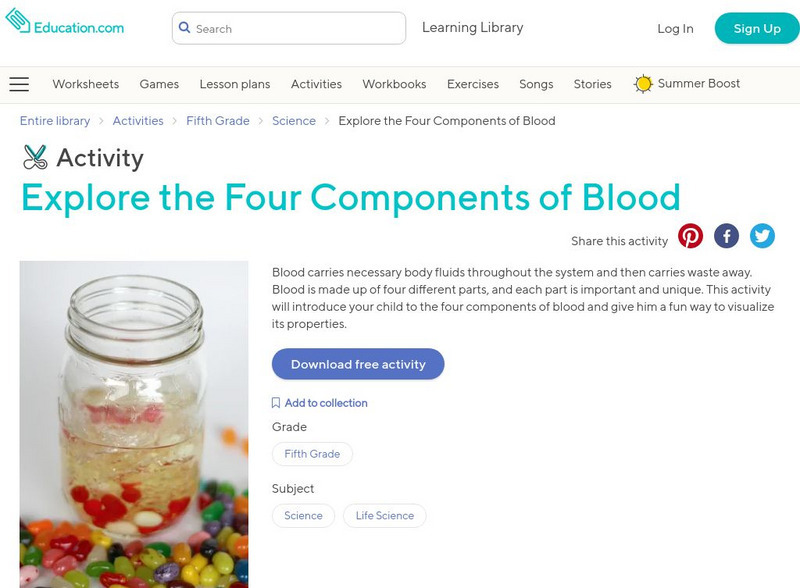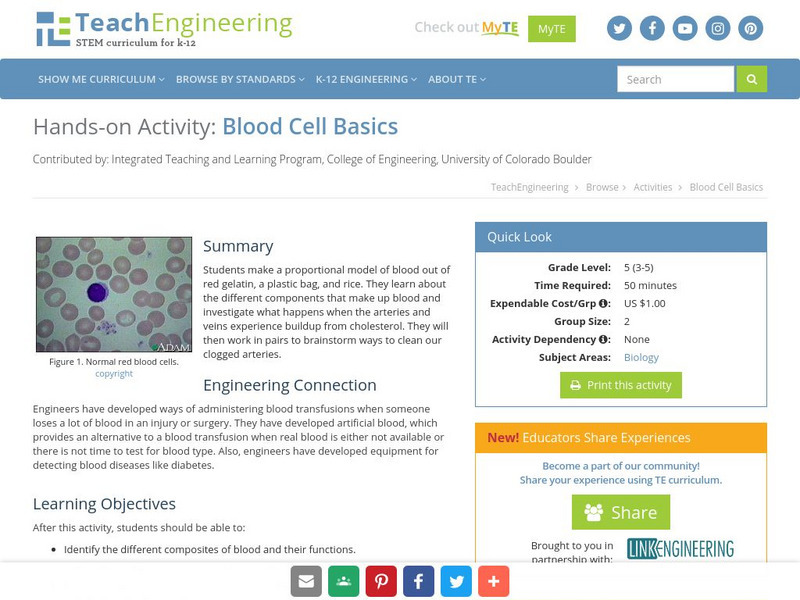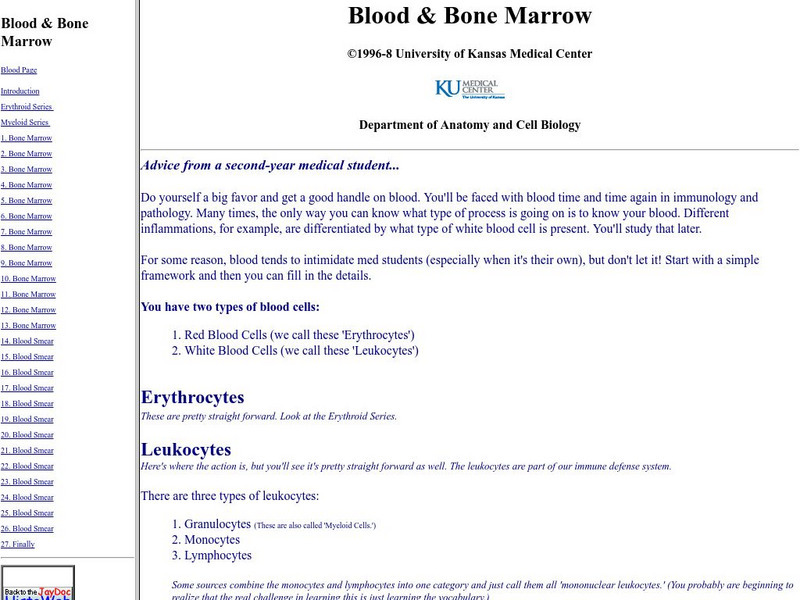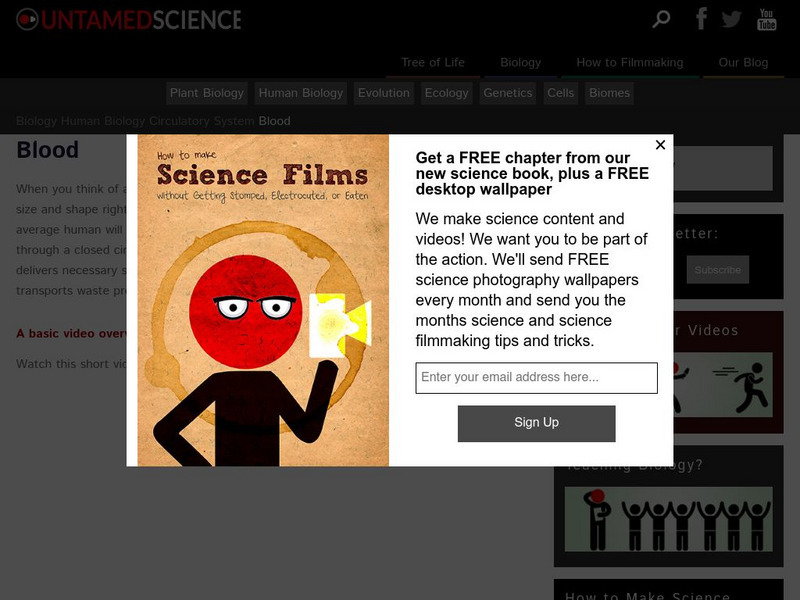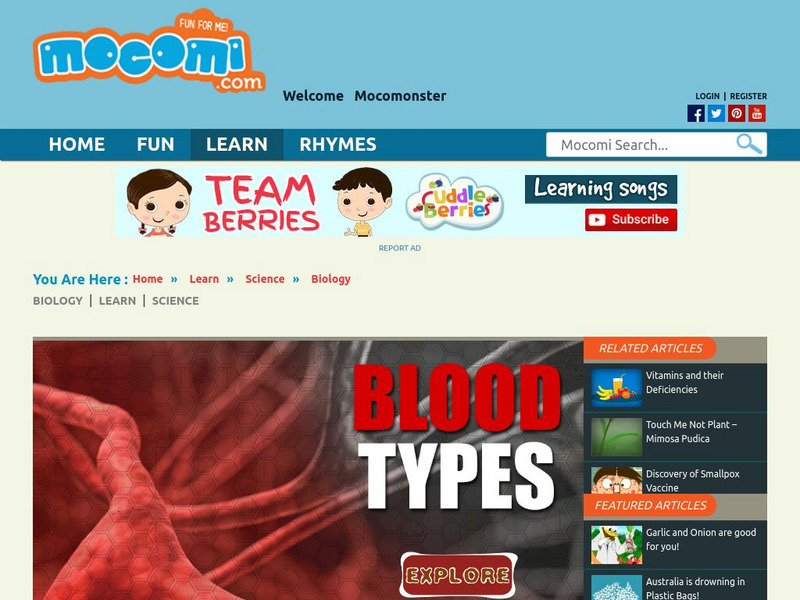Curated OER
Micro-organism Immune System Tag
Students play a game of tag and reinforce their understanding of the immune system.
Curated OER
Viruses Quiz
In this science learning exercise, learners will test their knowledge of viruses. Students answer ten multiple choice questions pertaining to virus characteristics.
Curated OER
Circulatory System
In this circulatory system worksheet, students use an internet program to observe the circulatory system and answer short answer questions about it. Students complete 21 short answer questions.
Curated OER
Immune System Function
Students study the different facets of the Human immune system, including the functions of all the different organs in the immune system.
Curated OER
Operating the spectrophotometer
Working in small groups, pupils explore the operation of spectrophotometer. Using the spectrophotometer, they investigate Beer's Law with everyday items.
Curated OER
The Natural World
In this nature worksheet, learners complete the sentences about nature by choosing the correct words. Students complete 11 sentences total.
Other
American Red Cross: White Blood Cells
Site provides users with a brief description of what white blood cells are and what they do. Contains links to plasma, platelets, red blood cells as well as types of blood cells.
Other
Fun Science Gallery: Let's Observe the Red Blood Cells
A brief overview of red blood cells accompanies a blood smear observation experiment. Includes drawings and photographs to aid in understanding.
WebMD
Web Md: Complete Blood Count (Cbc)
This site from WebMD provides an extremely detailed description of a complete blood count, how it is taken, what it measures, and what the results tell you. Links to important terms within the text and a chart that shows average amounts...
CK-12 Foundation
Ck 12: Life Science: Components of Blood
[Free Registration/Login may be required to access all resource tools.] Did you know that blood is a tissue? Blood is a fluid connective tissue that is made up of red blood cells, white blood cells, platelets, and plasma. Learn more...
Other
Dr. Hull: Parents' Common Sense Encyclopedia: Cbc, Complete Blood Count
Chart giving the normal ranges in a complete blood count or CBC. Looks at white blood cells, hemoglobin, hematocrit, red blood cells, platelets, and average red cell size. Click on highlighted terms for more information about them.
Exploratorium
Exploratorium: Microscope Imaging Station: Blood Cells
This colorful site provides a gallery of blood cell photos. You can observe human white blood cells, human red blood cells, sheep red blood cells, and zebrafish red blood cells. As an added bonus, you can enlarge the red blood cell...
Palomar Community College District
Palomar College: Blood Components (Tutorial)
This review of what makes up human blood is easy to read and understand. There are guides to pronunciation and glossary links as well as a self quiz to check your understanding.
CK-12 Foundation
Ck 12: Biology: Blood
[Free Registration/Login may be required to access all resource tools.] Defines and describes red blood cells and white blood cells, and describes the roles of platelets.
Khan Academy
Khan Academy: What's Inside Blood?
An explanation of blood from the time it is drawn from the arm to its centrifugation to an analysis of the three components of plasma, white blood cells, and red blood cells.
Education.com
Education.com: Make Plasma Soup and Explore the Components of Blood
[Free Registration/Login Required] Allow students to visualize blood and its components by making this plasma soup. Discuss plasma, red blood cells, white blood cells, and platelets with this model of blood.
TeachEngineering
Teach Engineering: Blood Cell Basics
In this lesson students learn about the circulatory system and how it relates to engineering. Then in a hands-on activity they create a model of blood. Students also act out cholesterol in a blocked artery and look at blood cell in a...
Curated OER
Kids Health: A Body Basics Article: Blood
Site provides an article on blood and what it does. Contains specific information on red and white blood cells as well as platelets.
OpenStax
Open Stax: Anatomy & Physiology: An Overview of Blood
Find out about the characteristics and components of blood with informational text, diagrams, examples, and review questuons.
University of Kansas Medical Center
University of Kansas Medical Center: Blood & Bone Marrow
A collection of specimen samples showing bone marrow and other blood smears.
Untamed Science
Untamed Science: Biology: Human Biology: Blood
Learn about the structure and function of human blood as well as the composition of this complex substance in the human body through a series of video clips.
Other
Health on the Net Foundation: Eosinophil
A definition of eosinophil, one of the five different types of white blood cell characterized by large red (i.e. eosinophilic) cytoplasmic granules.
Other
Psbc: Introduction to Hematology
This well-illustrated overview of blood biology examines the development and function of each of the different types of blood cells. Features include an assessment test.
Mocomi & Anibrain Digital Technologies
Mocomi: Blood Types
Understand how blood functions within the body and how it is broken down into various blood types.











